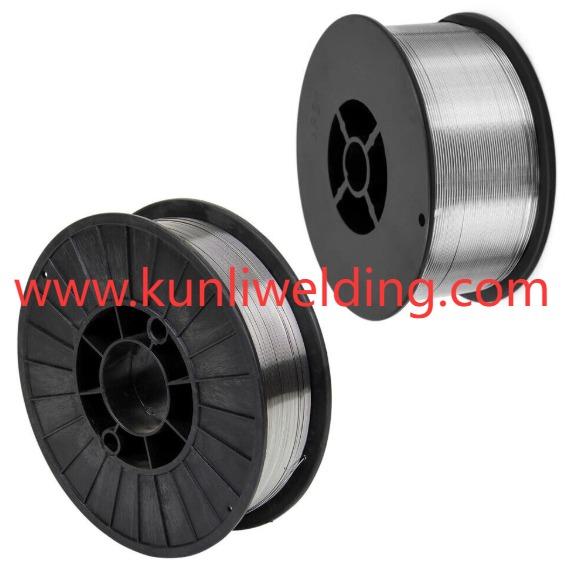Could Kunliwelding Provide Consistent ER4943 Wire For Your Fabrication Needs

In modern fabrication the conversation about lightweight structures and durable joints keeps gaining momentum and material choice sits at its center. Among filler options Aluminum Welding Wire ER4943 appears frequently in those conversations because of its compatibility with thin sections and its role in corrosion resistant connections. Manufacturers and engineers are discussing how this filler behaves in automated cells and manual operations alike and why it matters for applications that require both aesthetic finish and reliable performance.
Interest in this filler is driven by shifts across several sectors where reduced mass and service life considerations influence design choices. When vehicles and buildings move toward lighter assemblies producers need consumables that support consistent fusion without introducing extra finishing work. That practical need has made the alloy a focal point for dialogue between material suppliers production engineers and specification teams.
From a manufacturing perspective the way a wire is produced affects how it behaves at the arc. Controlled alloy batching drawing sequences and tempering routines influence ductility and feedability. When plant practices emphasize dimensional consistency and surface cleanliness the result is a filler that feeds evenly and wets predictably on the parent metal. Those attributes reduce time lost to parameter hunting and help maintain throughput in both manual and automated welding operations.
Surface treatment and packaging choices also shape in shop outcomes. Aluminum forms an oxide quickly and any surface film on the filler can affect pool dynamics and joint appearance. Producers that invest in cleaning processes and moisture resistant packaging reduce the chance that a spool will introduce variability during production. Clear storage guidance and visible labeling further support repeatable results when multiple shifts or facilities are involved.
Process alignment completes the link between production and performance. Welding teams tune current travel speed and wire feed to produce the intended bead geometry while keeping distortion in check. In high volume settings pulse and waveform strategies are used to balance deposition and heat input. When supplier notes include suggested process windows and handling guidance shops require fewer iterations during trial runs and qualification activities.
Testing and validation are practical checkpoints for procurement and quality groups. Representative trial welds that reflect the joint geometry and finish expectations reveal how a filler will perform in real tasks. Visual inspection of bead profile checks on porosity and simple mechanical checks on fillet integrity give objective information teams can use when comparing supplier lots. Documentation that links batch records to test results aids traceability and simplifies root cause work when anomalies appear in production.
Supply chain stability and vendor responsiveness factor into long term use. Firms that can provide timely technical responses packaging alternatives and consistent delivery reduce the operational risk of last minute substitutions. For programs that span multiple sites or that have seasonal demand swings a supplier with visible product information and accessible contact channels eases coordination during ramp ups and handovers.
Sustainability considerations are increasingly present in procurement dialogue. Material reuse and lifecycle thinking encourage teams to prefer consumables that support repair and recycling while maintaining performance. Suppliers that publish clear material origins and processing approaches help engineers weigh environmental objectives alongside weld quality and cost.
Operator skill and shop practice remain decisive. Even well made filler needs consistent joint preparation and stable equipment to produce repeatable results. Training that emphasizes arc sight lines torch mechanics and handling of the filler reduces variability between operators and shifts. When teams combine disciplined shop practice with consistent supplier product control the probability of smooth production increases markedly.
For engineers and buyers comparing options the practical path is clear. Start with representative trials document the results correlate them with supplier batch information and consider packaging and support services alongside product performance. When all these elements align the filler becomes an enabling part of a welding solution rather than a source of recurring adjustments. To review product information and contact the supplier team visit www.kunliwelding.com .
- Art
- Causes
- Crafts
- Dance
- Drinks
- Film
- Fitness
- Food
- Giochi
- Gardening
- Health
- Home
- Literature
- Music
- Networking
- Altre informazioni
- Party
- Religion
- Shopping
- Sports
- Theater
- Wellness


